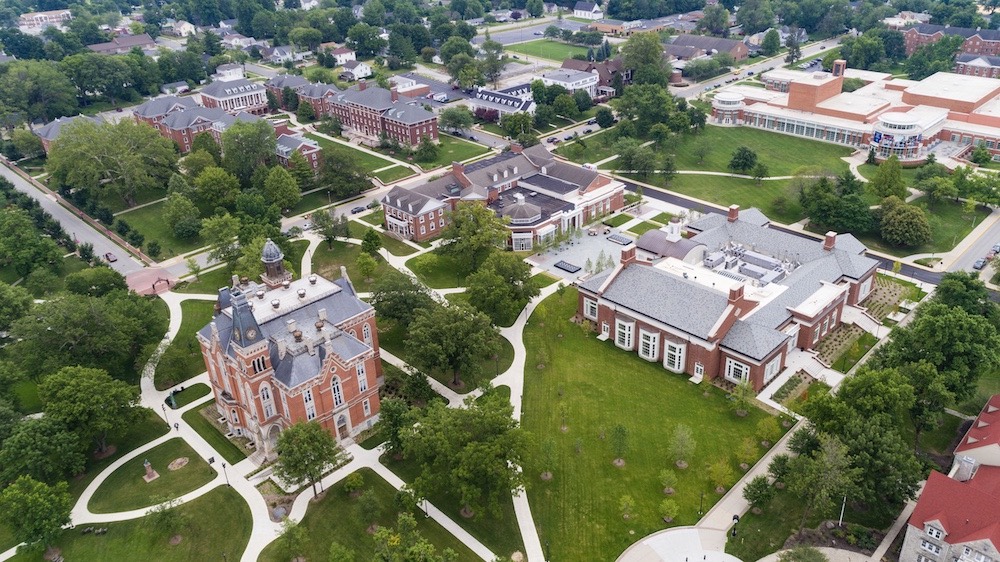DePauw is No. 4 in the nation for helping grads up the income ladder

DePauw University is the fourth most adept university in the country at setting its graduates on a path of upward mobility, a new study says.
For a study called “Winners and Losers/Universities and the Pursuit of the American Dream,” researchers compared household income data for more than a million people who attended 1,107 public and private nonprofit universities during the 2001-02 through the 2003-04 academic years to earnings data in 2014, when those former students were in their late 20s or early 30s.
This enabled the researchers to calculate the “adjusted mobility rate” – the percentage of students from low-income backgrounds who moved from the bottom 40% of income distribution into the top 40% as adult workers. Researchers then identified 10 private schools – DePauw included – and 10 public schools that were particularly successful at enabling graduates to progress up the economic ladder.
DePauw’s adjusted mobility rate was 71%, 17 percentage points higher than what the researchers predicted based on the factors they evaluated. DePauw’s mobility rate was behind only those of Claremont McKenna College, Nebraska Wesleyan University and the College of St. Benedict, and higher than all public institutions.
DePauw was among the “institutions that ‘beat the odds’ in generating high mobility rates; that is, after controlling for a wide range of demographic and institutional characteristics, these institutions consistently move students up the income ladder at levels that are far above what would be expected of them,” the study said. “These colleges are rarely state flagship universities or Ivy League institutions; instead, colleges that beat the odds by the largest margins are usually regional, comprehensive colleges.”
The study was published by the American Enterprise Institute. The authors were Jorge Klor de Alva, president of Nexus Research and Policy Center, and Cody Christensen, a research associate at the American Enterprise Institute.
The study found that:
-
Higher education is an important driver of upward mobility, with more than half of low-income students who enrolled moved up to one of the highest two income quintiles by the time they reached their late 20s or early 30s.
-
Many factors are associated with a university’s ability to generate upward mobility, including completion rates, programs and majors, college selectivity and geography.
-
A college’s mobility rate cannot be reduced to the student populations it enrolls. Institutions with similar student populations and characteristics can produce substantially different outcomes.
-
The factor most closely associated with upward mobility at four-year universities is college completion rates, suggesting that graduation may have the most influence on enabling students to climb the economic ladder.
Browse other stories
-
Athletics
-
Women's Track & Field - Porter Selected Academic All-America® for Second Straight Year
-
Women's Golf - Williams Selected Academic All-America®
-
Football - 336 Students Named to 2025 Spring Tiger Pride Honor Roll
More Athletics
-
-
News
-
Outstanding scholars named to Spring 2025 Dean's List
-
Alumni News Roundup - June 6, 2025
-
Transition and Transformation: Inside the First-Year Experience
More News
-
-
People & Profiles
-
11 alums make list of influential Hoosiers
-
DePauw welcomes Dr. Manal Shalaby as Fulbright Scholar-in-Residence
-
DePauw Names New Vice President for Communications and Strategy and Chief of Staff
More People & Profiles
-
-
Have a story idea?
Whether we are writing about the intellectual challenge of our classrooms, a campus life that builds leadership, incredible faculty achievements or the seemingly endless stories of alumni success, we think DePauw has some fun stories to tell.
-
Communications & Marketing
101 E. Seminary St.
Greencastle, IN, 46135-0037
communicate@depauw.eduNews and Media
-
News media: For help with a story, contact:
Bob Weaver, Senior Director of Communications.
bobweaver@depauw.edu.